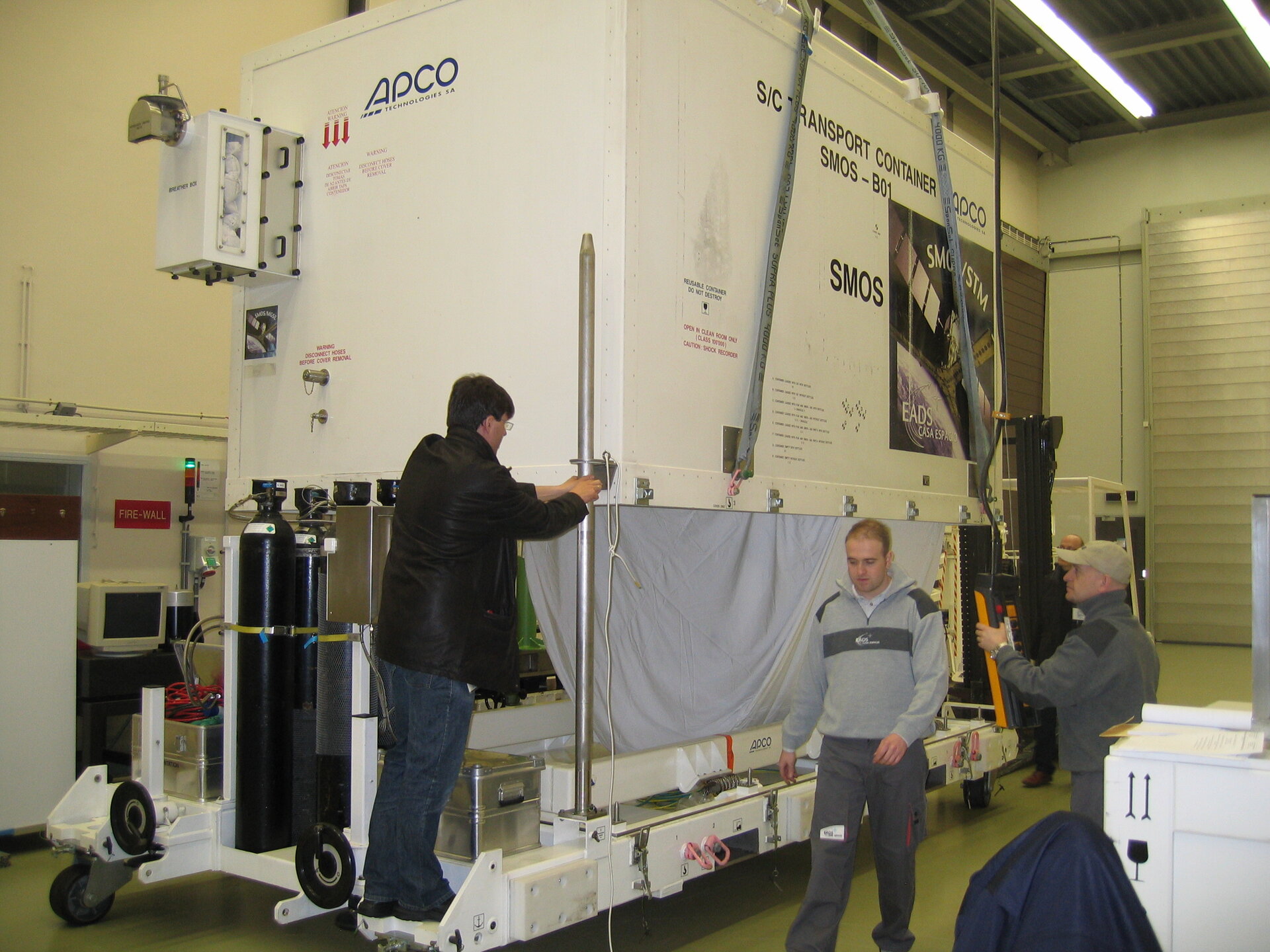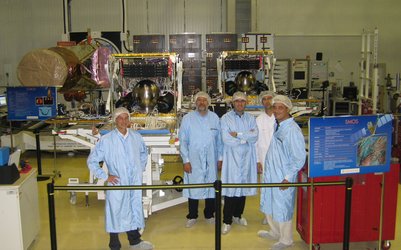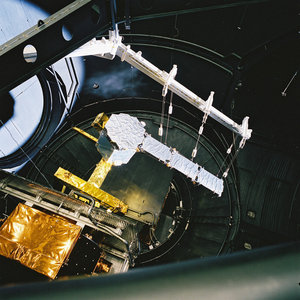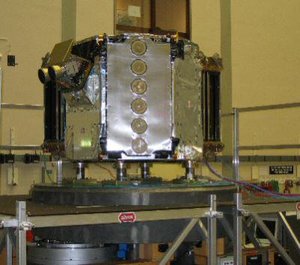SMOS payload module arrives at ESA-ESTEC for testing
The SMOS project has just reached another milestone with the arrival of the precious payload proto-flight model at ESA-ESTEC in the Netherlands - where it is about to be subjected to a period of rigorous testing.
Scheduled for launch in early 2008, the SMOS (Soil Moisture and Ocean Salinity) mission will advance our understanding of the Earth's water cycle and lead to better weather and extreme-event forecasting and improve our understanding of ocean circulation patterns. The mission will also demonstrate new technology in space by way of its novel 2-D interferometric radiometer. Now the mission is nearing the latter stages of preparation, the payload module has to be thoroughly tested before it is mated to the platform to form the complete SMOS satellite.
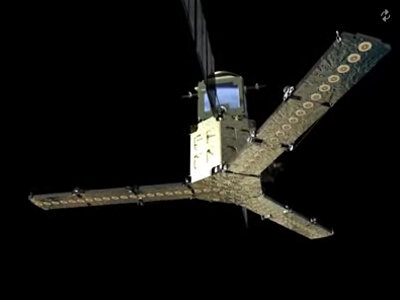
Having finished the assembly process and some initial testing at the prime contractor EADS-CASA's facilities in Madrid, Spain, the SMOS payload model arrived safely along with three other truckloads of supporting equipment at ESA's Test Centre on 9 March 2007.
The testing programme will start with determining the payload module's 'mass properties', which includes precisely measuring its overall weight, the location of the centre of gravity and the inertia around its three principle areas. These values are crucial for both tuning the launcher trajectory and as input for the satellite's Attitude and Orbit Control System (AOCS).
Next up, the SMOS payload module will undergo acoustic testing in the Large European Acoustic Facility (LEAF). Here the tremendous noise and vibration levels encountered under the launcher's fairing will be simulated.
The next step will be to install the payload module in the Large Solar Simulator (LSS), which is a large vacuum tank where simulated solar beams six metres in diameter are shone onto the test article. Since the satellite will experience different directions of illumination from the Sun in orbit, these different conditions have to been simulated and carefully analysed.
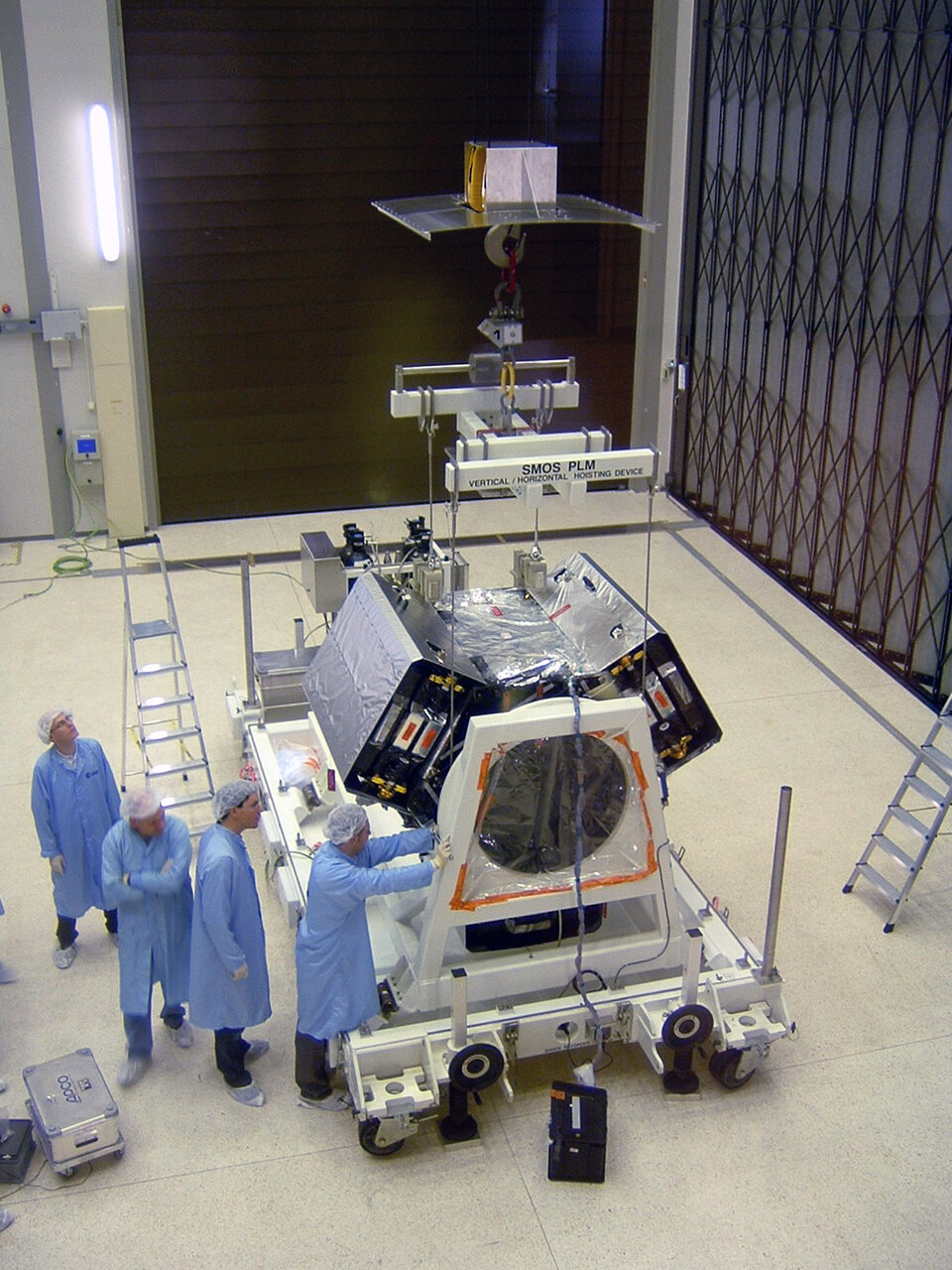
Some tests of this have already been carried out once on the SMOS Structural Thermal Model (STM). However, the previous tests in 2005 only involved one of the three antenna arms, but this time all three antennae will be tested – fully deployed and suspended on a complicated test-jig to exercise the different illumination conditions. Also last time the tests on how power dissipated from the electronic components was simulated by test heaters, but now the proto-flight model has all the real electronics on-board. This makes the test more accurate and also will allow some performance assessment to be carried out on the internal calibration under representative temperature conditions.
Finally, the payload module will be moved to the Maxwell Facility, which is a specially insulated room shielded from any external electromagnetic disturbances. Two major campaigns will be conducted here; the Electromagnetic Cleanliness Test (EMC) and the Image Validation Test (IVT). The ECM measures all kinds of electromagnetic interactions when the payload is operated and the main goal is to demonstrate 'auto-compatibility', which means that the operation of the payload does not interfere with its own measurements. The IVT involves the fully deployed payload imaging a source of electromagnetic radiation mounted on the ceiling of the facility. This demonstrates that all the measurements including internal calibrations achieve an image from the interferometric array.
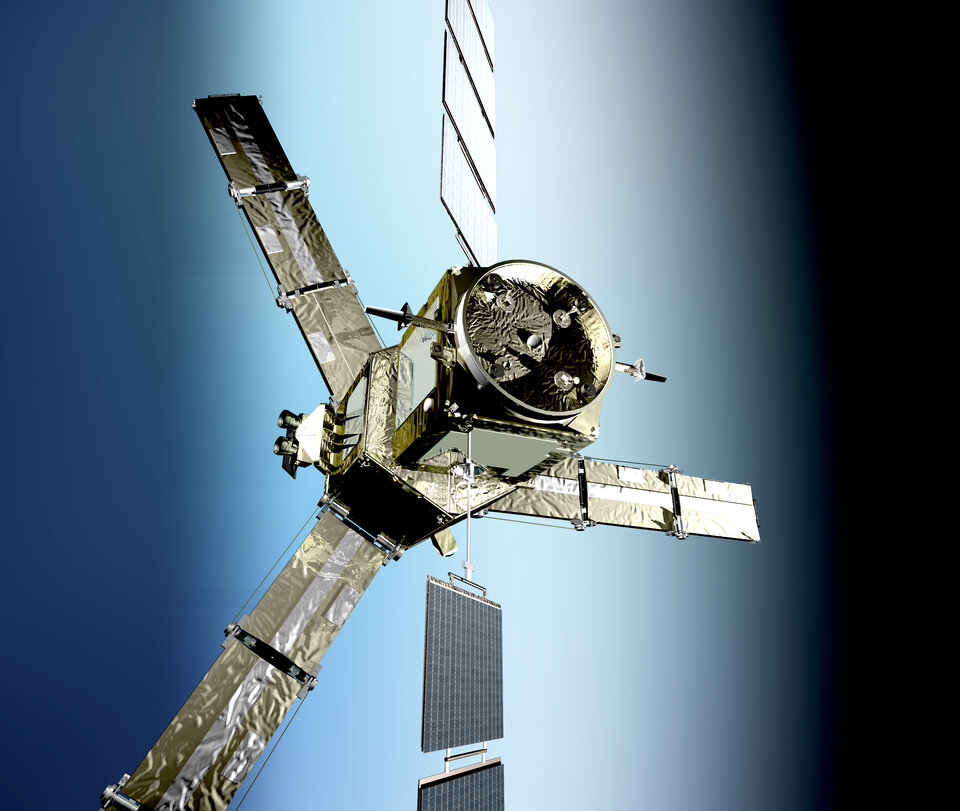
Once all these test phases have been successfully completed the payload will be folded up and packed into its container for shipment to Alcatel Alenia's facilities in Cannes, France. Here the payload will be mated to the Proteus platform to form the integrated SMOS satellite.


